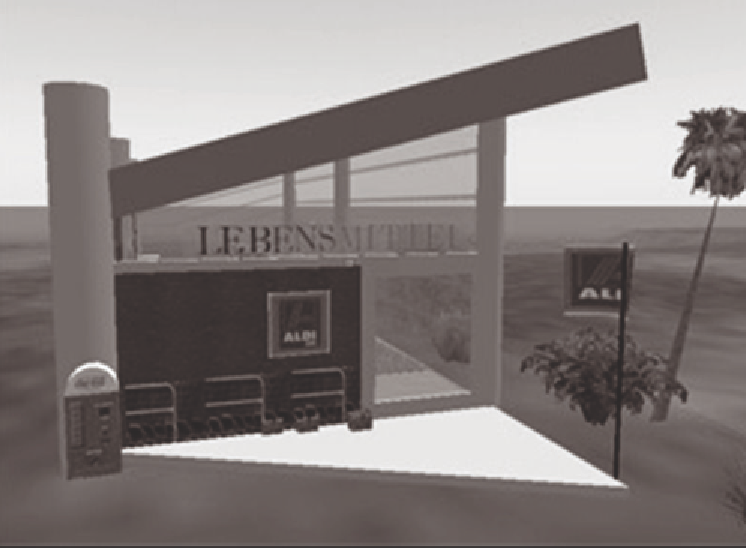Graphics Programs Reference
In-Depth Information
Figure 1. Screenshot of the Aldi Store
The context was meaningful because mastering
food vocabulary and knowing how to effectively
select and purchase food is one of the basic neces-
sities in using language.
items, which these two theories would suggest to
be too many. However, we felt that the similarity
of German to English made it likely that many of
our vocabulary items were not actually completely
new to the students.
Limitations
First, some students may be less interested in
shopping. Second, the store may feel too cramped.
Even though it was meant to be small (
see
Theo-
retical underpinnings [Th1
Cultural Connections
#2]), it was still unwieldy for avatars to move in
it and explore it. This limitation goes with the fact
that
Second Life
limits the size of a prim (i.e. a
building element) to 10 units and therefore makes
it difficult to build spacious enclosed structures.
Third, according to Miller (1956), people are able
to store between five and nine new chunks of
information in short-term memory. An alternative
theory suggests that short-term memory is limited
to only three items (Peterson & Peterson, 1959).
The activity described here had as many as 20
Theoretical Underpinnings: Activity #2
[Th1]
Cultural connection#1: Aldi
is a chain of
supermarkets that originated in Germany;
therefore it set the activity in a culturally
appropriate context. Further, the textures
(that is, the images) of the food items re-
sembled the original German products, with
the rationale being that the students would
become more acquainted with those German
products, connecting them to the vocabulary
they were learning.
Learning a language and learning the associated
culture of that language are inseparable. Therefore,

Search WWH ::

Custom Search